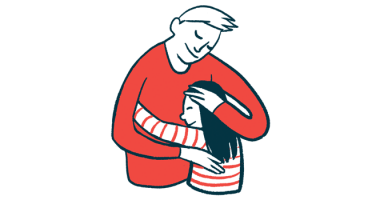Trusting our instincts sometimes means avoiding health trends
In caring for our daughter, we rely on practices that feel natural for our family

Social networks offer a public platform for people to share their ideas, but authenticity can be a challenge to identify amid the abundant content available. As a parent of a child with a rare and incurable disease, I could be misled by the lofty claims and health trends that show up in my news feed.
When my wife, Judy, and I learned that our daughter, Rylae-Ann, had aromatic l-amino acid decarboxylase (AADC) deficiency, we began feverishly researching every aspect of our new life. The computer algorithms picked up on those search trends, and, very quickly, all sorts of health-related ads and posts appeared on our screens.
We detached ourselves from social media networks and concentrated on keeping our daughter alive. Fortunately, she was able to undergo gene therapy, a life-changing treatment that gave us all a new chance at life.
Today, Judy and I are back on social media, actively creating awareness, advocating for research, and sharing tips with other parents. Little by little, the posts that showed up on our feeds catered more to our new lifestyle. Some included products and strategies related to homeopathy, a type of alternative medical practice that claims to stimulate intrinsic healing responses to treat a range of ailments.

Rylae-Ann connects with nature while lying atop the cool grass on a weekend morning. (Photo by Richard E. Poulin III)
I prefer research-based treatments for my daughter, but then again, we did enroll her in two clinical trials. I understand the need for parents to experiment when no cure is available and little research is happening.
Recently, two homeopathic practices caught my attention. Although we don’t use them, I realized we incorporate similar concepts into our routine.
Red light therapy
Red light therapy is an emerging treatment believed to have potential for helping skin, muscle tissue, and other parts of the body heal. The theory is that exposing the body to low levels of red or near-infrared light may stimulate the mitochondria in your cells, increasing energy production. It also could possibly help cells repair themselves and become healthier, but more research is needed.
We don’t use red light therapy on Rylae-Ann, but we do use sunlight. Partly because of her temperature instability and clockwork routine of waking up with the sun, we use the early morning to get outside and move.
A benefit of heading outside in the morning is that it allows for exposure to sunlight at a tolerable level. That’s been proven to increase vitamin D production, improve mood, and support better sleep. Plus, it’s free.
Grounding
Grounding, or earthing, is another practice I often see in my feed. The theory is that touching the ground with bare feet allows a person to connect to Earth’s natural healing energy. This practice, in turn, is believed to help reduce inflammation, pain, and stress while also possibly improving blood flow, sleep, and vitality. Again, more research is needed, but the process suggests great rewards for simple actions.

Rylae-Ann runs barefoot across the grass as the morning sun shines on her. (Photo by Richard E. Poulin III)
While we don’t practice grounding specifically, being out in the morning is an opportunity for Rylae-Ann to connect with nature. Her shoes come off, and we let the grass, sand, or water touch her skin. It was even a celebrated occasion for us when Rylae-Ann first dipped her toes in the ocean. We also let her do it to improve her sensory processing skills. Judy and I joined in the fun and supported our daughter’s mobility through playful exercises.
Trusting your instincts
We don’t subscribe to any homeopathic practices at this time. However, it seems our intuition aligns with some emerging literature about the potential health benefits of such practices. Supplements and vitamins are essential in supporting our daughter, but in our opinion, nothing compares with natural sources like sunlight.
Always consult a doctor before experimenting with any health trends you see on social media. For our family, it’s been crucial to choose a path that feels healthy, natural, and in alignment with our instincts.
Note: AADC News is strictly a news and information website about the disease. It does not provide medical advice, diagnosis, or treatment. This content is not intended to be a substitute for professional medical advice, diagnosis, or treatment. Always seek the advice of your physician or other qualified health provider with any questions you may have regarding a medical condition. Never disregard professional medical advice or delay in seeking it because of something you have read on this website. The opinions expressed in this column are not those of AADC News or its parent company, Bionews, and are intended to spark discussion about issues pertaining to aromatic l-amino acid decarboxylase deficiency.







Comments